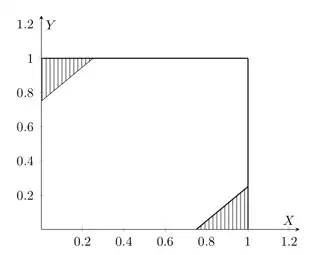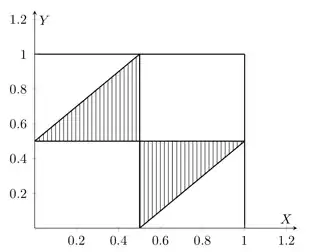Suppose Alex has a one meter long wooden stick that Alex breaks randomly in two places such that the location of the breaks are independently distributed uniformly along the length of the wooden stick.
(a) Calculate the probability that one of the pieces will be more than 75 cm.
Is this just $\frac{75}{100}$?
(b) Calculate the probability that the three resulting pieces of the stick can be arranged to form a triangle.
I know the stick cannot form a triangle unless all three pieces are no longer than the sum. But I don't know how to make this into a probability? If $\alpha$ is the first break and $\beta$ is the second break and L is the length of the stick, then $\alpha < \frac{L}{2}$ and $\beta < \frac{L}{2}$. How would I turn this into a probability?

